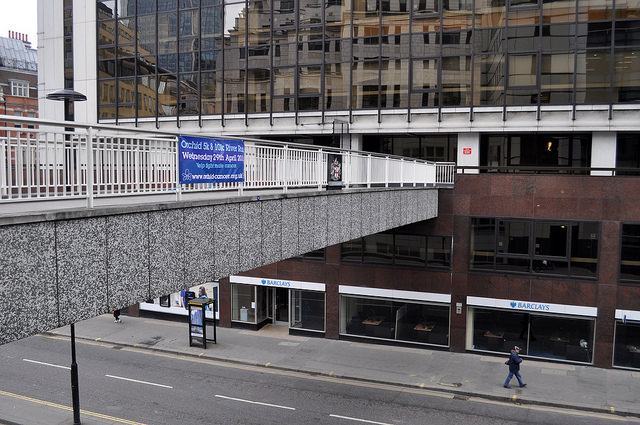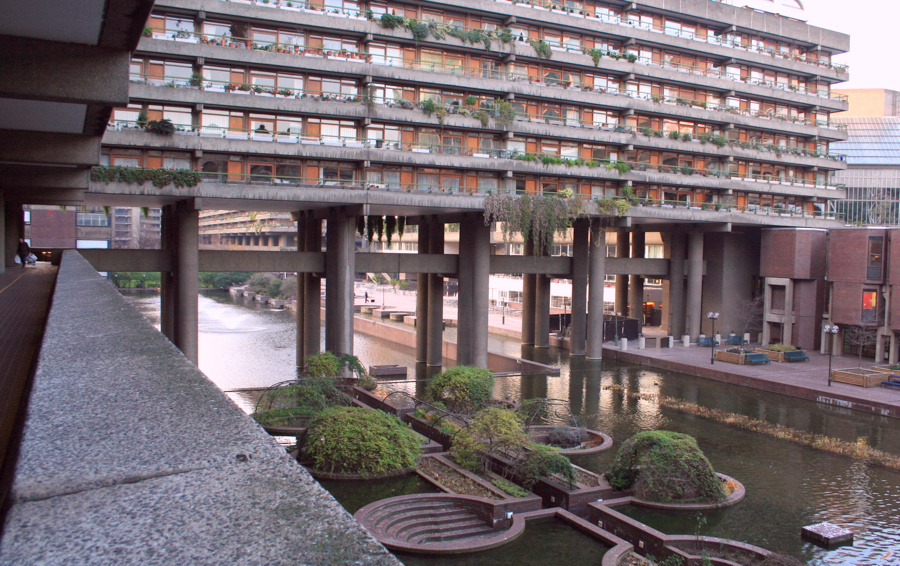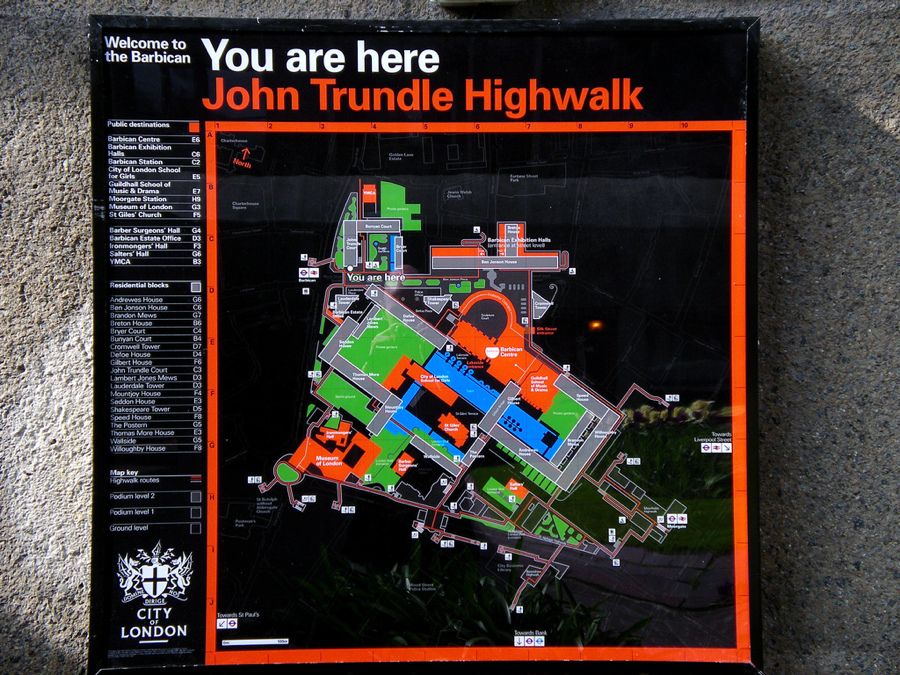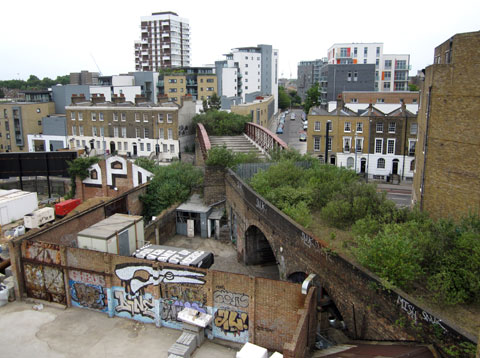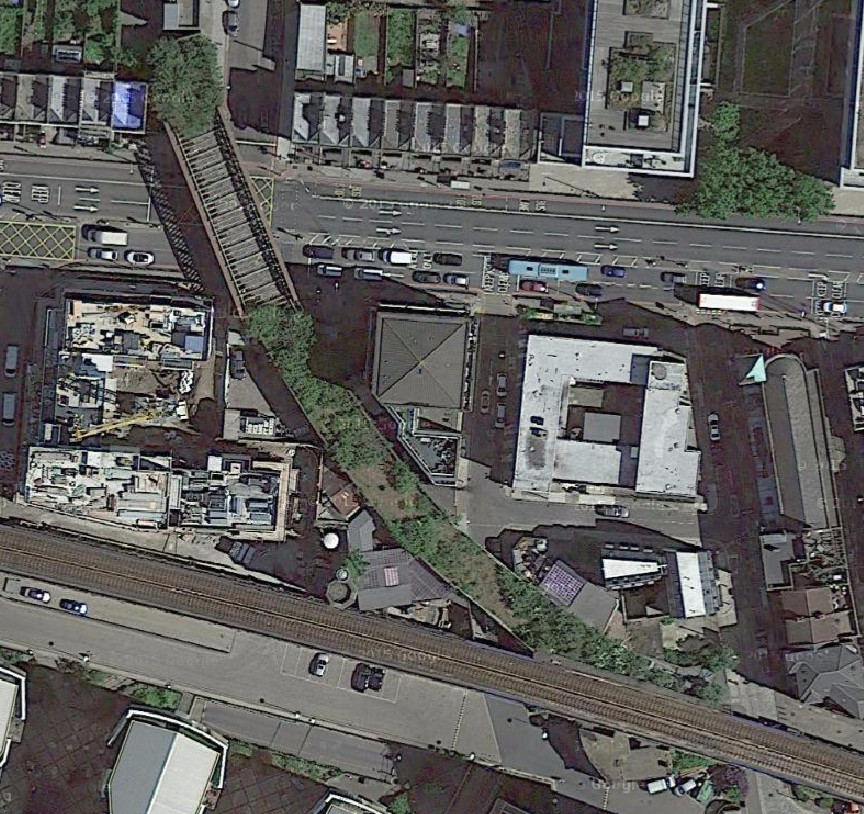[Update: Being actively considered/promoted by Camden Town Unlimited]
Over the last two weeks I have featured eleven potential London High Lines (see all the previous ones here) – all of them could be interesting place but none of them quite have the potential to be a London “High Line”.
Today, my final London High Line, is the one that I think ticks all the boxes. It runs through post-industrial gritty inner-city London, it’s elevated, it’s an old railway route, and the land is just lying there, undeveloped. It is the Camden High Line – a potential High Line that runs between Camden Gardens Park (just off Kentish Town Road), around the back of Camden Road station, across a number of intact, unused bridges and finishing at an existing footbridge across the Midland Mainline, just past Camley Street. In all, a distance of around 800m (half a mile), with a possible Phase 2 future extension across to the huge and evolving development area behind King’s Cross station, although this additional section would require the building of at least one footbridge.
The route:
1. Western end
This would likely need the most expensive new structure – a lift with a surrounding staircase, to allow step-free access onto the route from the western end. It would also need to use a small section of the public park here – Camden Gardens Park – for the lift/staircase to “land”.
The route would then move quite quickly away from the current line, using the disused (and now heavily overgrown) section behind Camden Road station – another possible access point and one that could provide an alternative step-free entrance using the existing lift there, from the eastbound platform (ticket barrier location notwithstanding).
The route moves back towards the current line, crossing Camden Road on a disused but intact bridge as it does so. This is the bridge which currently has “Camden Road” painted on its side, prominently, by Network Rail, visible when travelling down the hill from Camden Road. (The other nearby railway bridge also has “Camden Road” painted on it, when facing the other way.) As you can see from the Google Streetview imagery, the bridge is sitting waiting for a walkway to be added onto it:
2. Middle section
The route continues along the former double-track, alongside the existing double-track between Camden Road and Caledonian Road & Barnsbury, walled off safely but with plenty of space available for the High Walk itself.
Shortly, a couple of other bridges are crossed. One crosses over at a road junction. There is plenty of pavement below the bridge here and so this is a potential landing location for a staircase (possibly spiral) for an intermediate entry/exit to the walk.
3. Eastern end
The route continues eastwards, narrowing quite a bit near the end at the final bridge across Camley Street although still with plenty of space beside the operational railway for a path and appropriate screening from the operational railway.
There is a choice of endings at the eastern end. There is already a (pretty unpleasant and unsafe feeling) set of steps down from the western side of the Midland Mainline existing footbridge. This could be remodelled and made safer. At the bottom is the northern end of Camley Street, a light industrial estate, with an existing pedestrian link north to Agar Grove, and a quiet road south that leads to the Regent’s Canal – from there, King’s Cross Central is nearby. Alternatively, continuing along the road eventually leads to St Pancras International station.
The second ending is a level access from the footbridge crossing the Midland Mainline – at its eastern end, paths head north and then northeast, connecting to Agar Grove and eventually Caledonian Road. This has the benefit of providing a step-free end to the walk, so that, unlike at the western end, a lift would not be necessary.
4. Phase 2 extension
This would connect the eastern end of the Camden High Line, southwards to the huge mixed-use King’s Cross Central redevelopment and Central St Martin’s College, behind King’s Cross station. Such a route would require crossing over (or under) the existing North London Line, and various other lines emerging from St Pancras, with at least one footbridge needed – as such it would be an expensive exercise. I’m just mentioning it here as having a complete “High Line” link running all the way between, Camden Town and King’s Cross, to parallel with the Regent’s Canal route to the south of it, seems like an obvious route between two major north London walking destinations.
So could it happen? Well, the viability of the project would depend on Network Rail reliquishing its land, on support from Camden Council, a fundraising effort to fund a feasibility report and build the actual trail, and on the creation of a local trust dedicated to maintaining such a route once it opened on a largely voluntary basis, like happens on the New York High Line. In short, it wouldn’t be easy, but it is certainly very possible.
See all 12 of my London “High Lines”.
Photos from Google Street View and Google Aerial Imagery. Map from OpenStreetMap (Data ODbL, cartography CC-By OSM contributors). Subsequent to first publication, I’ve renamed this blogpost from “The Camden Line” to avoid confusion with the MARC Camden Line rail commuter line in Maryland, USA.

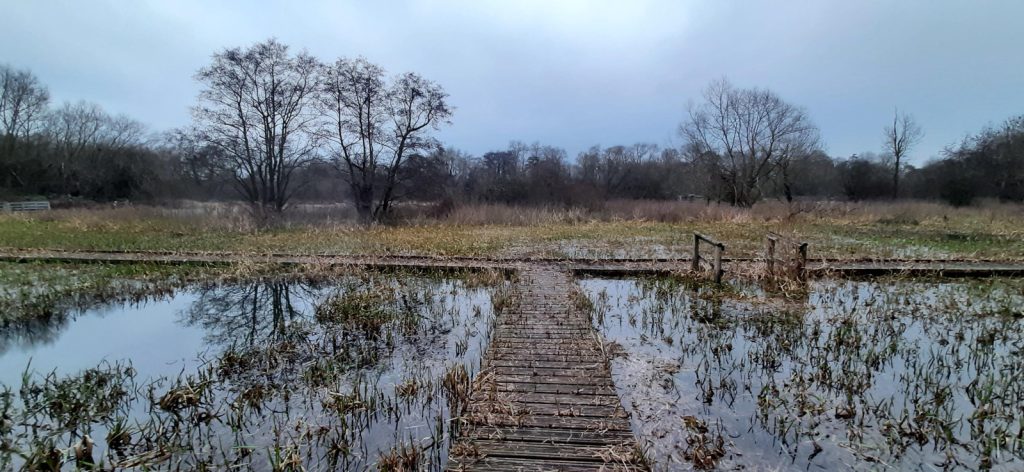

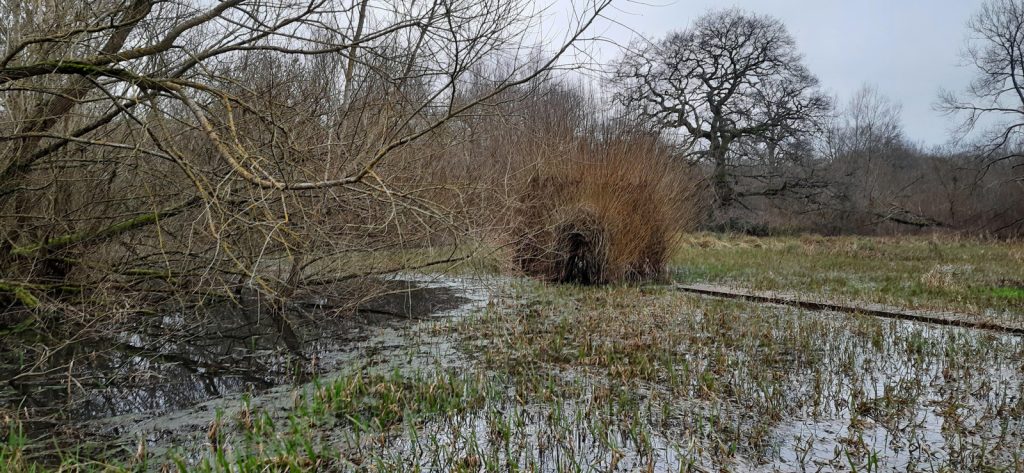


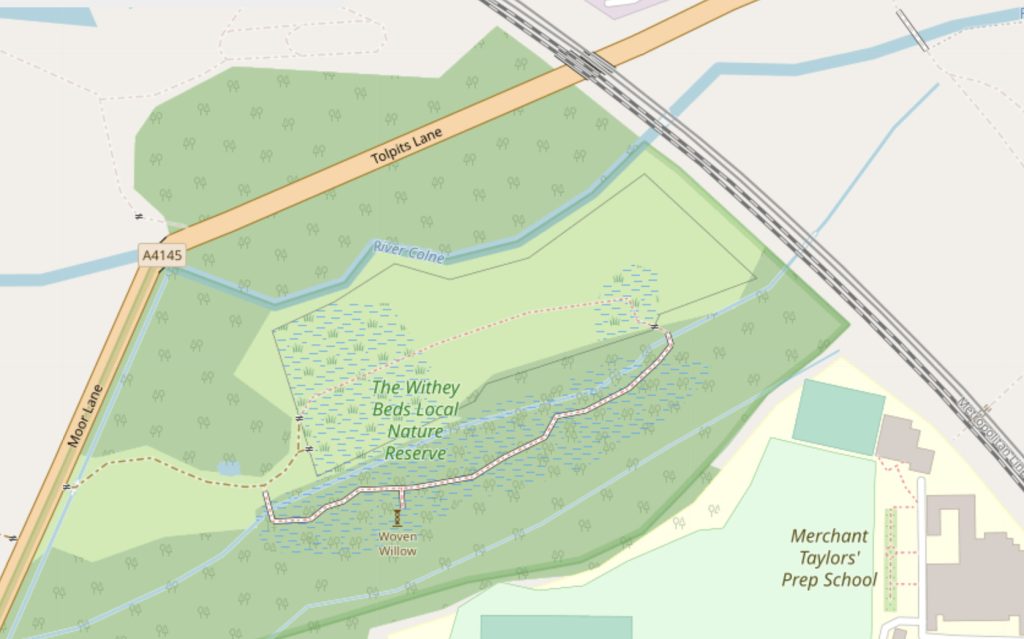










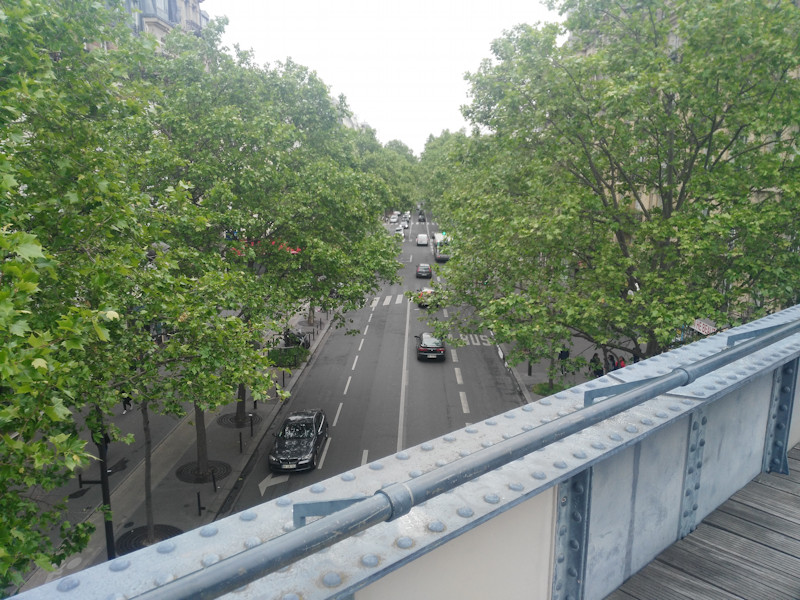

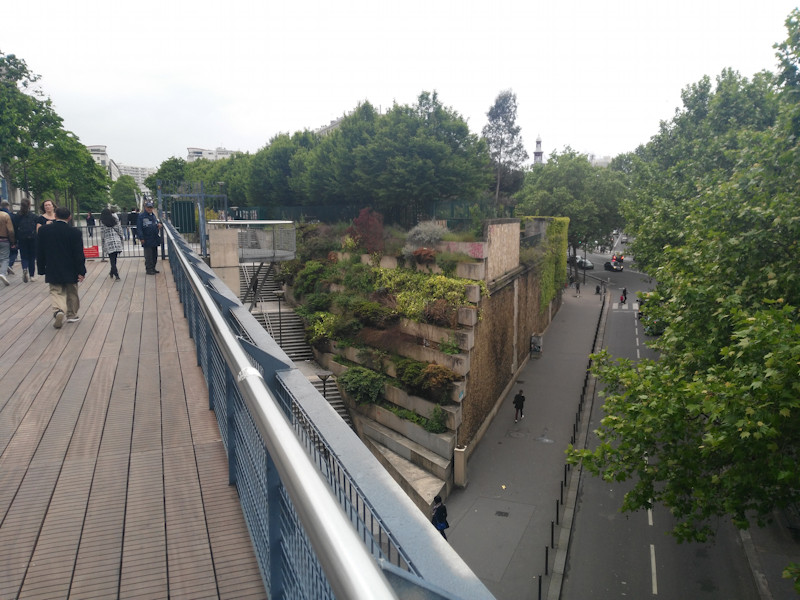
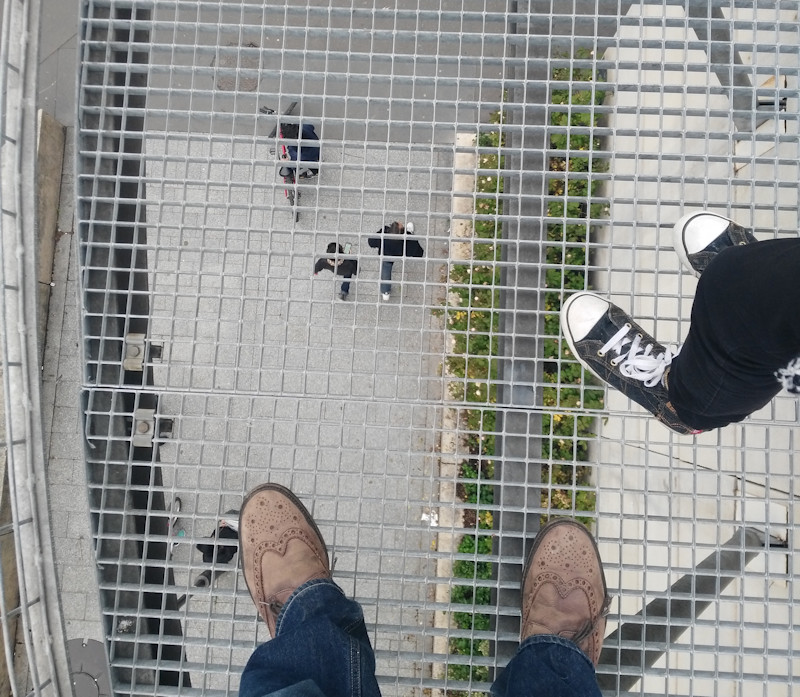

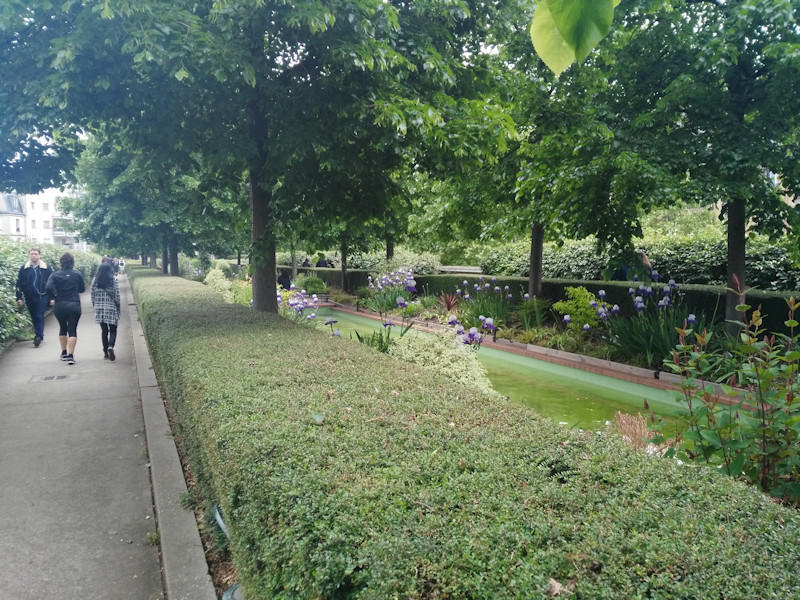
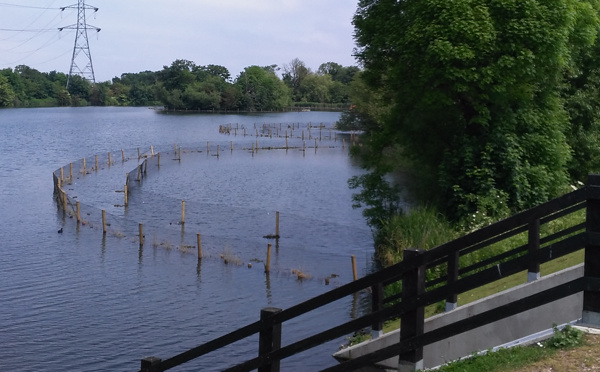
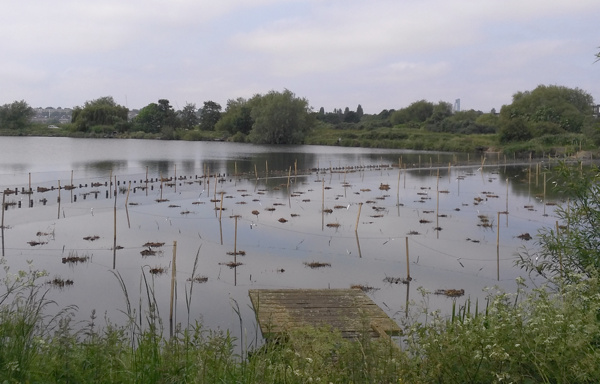
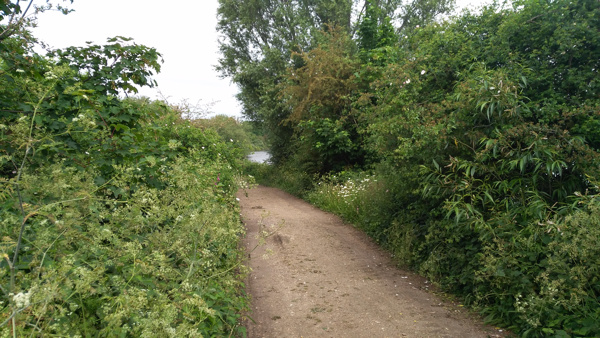
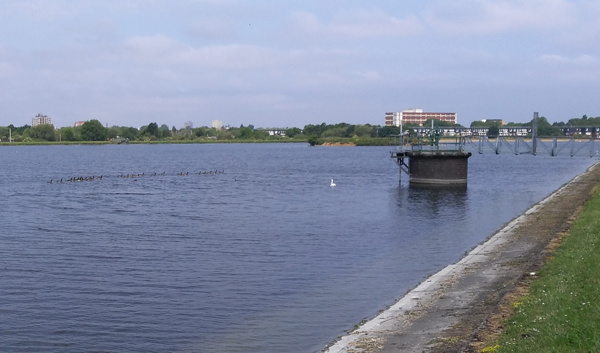
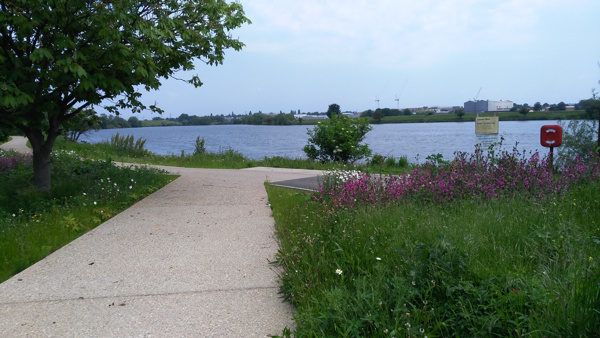

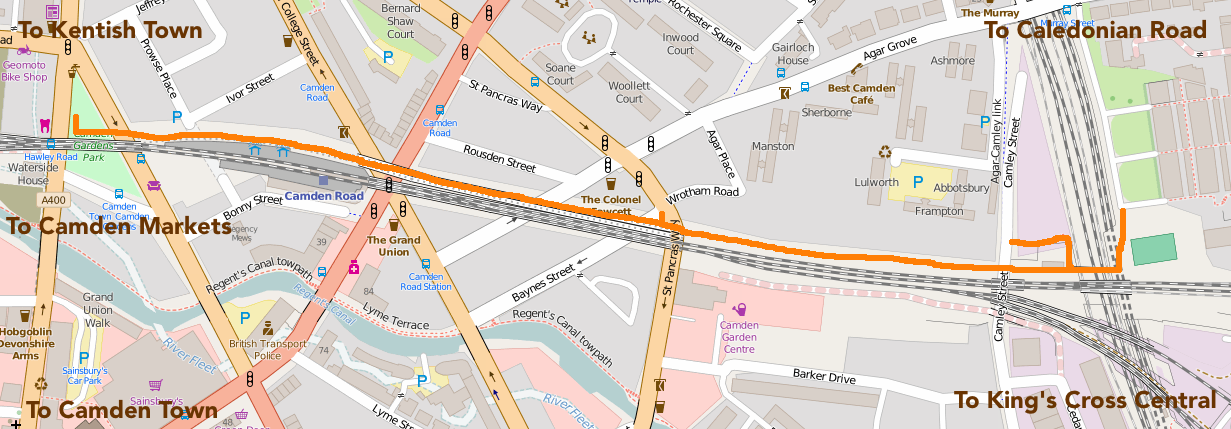



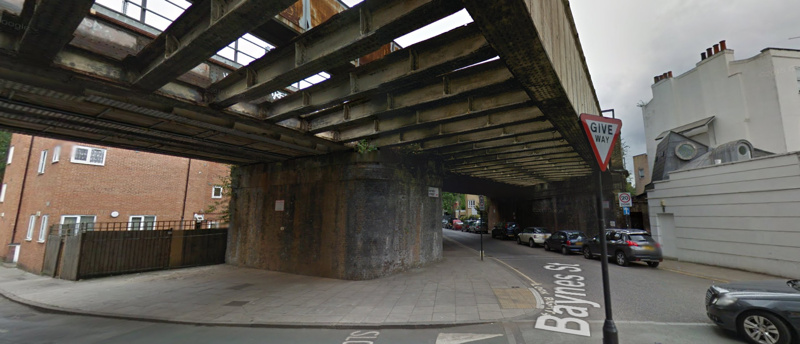

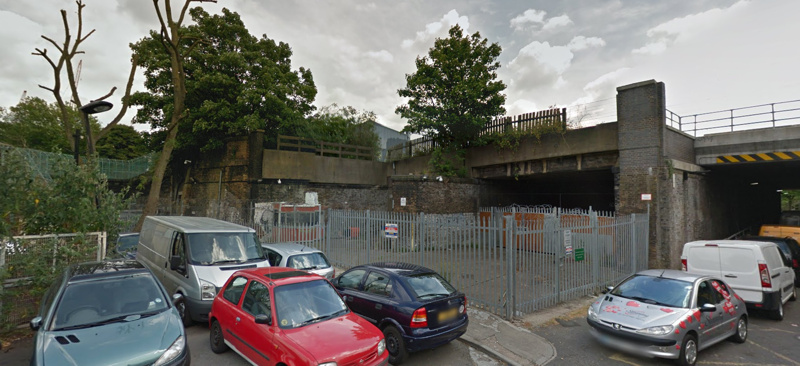
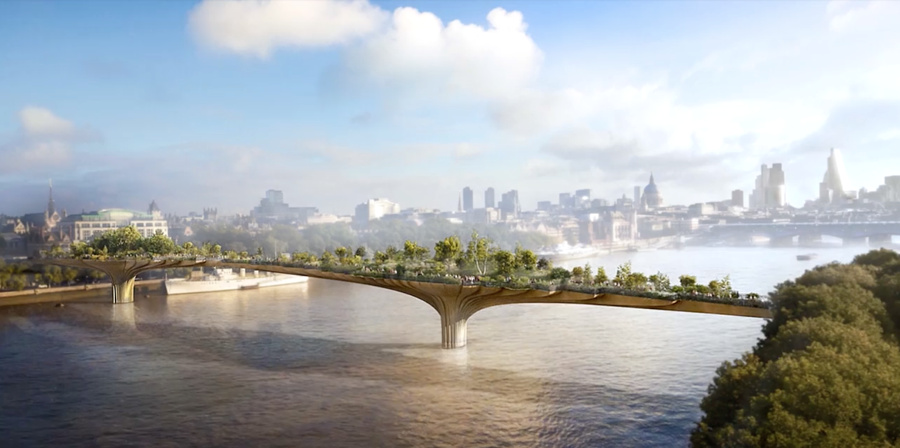
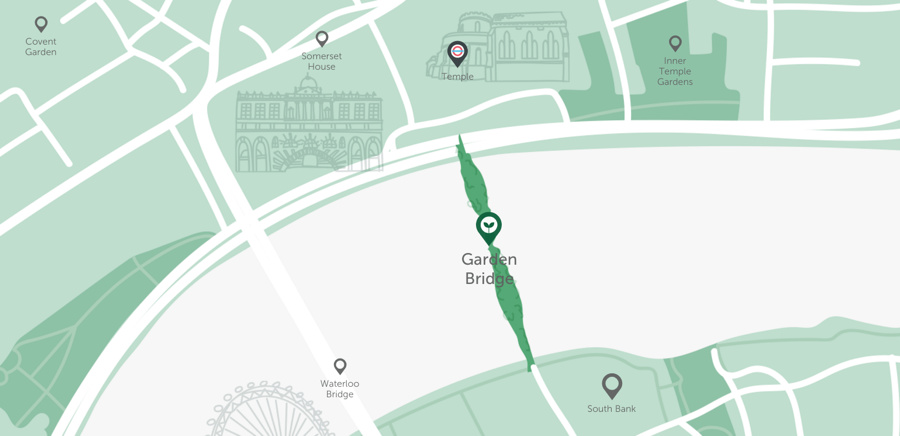
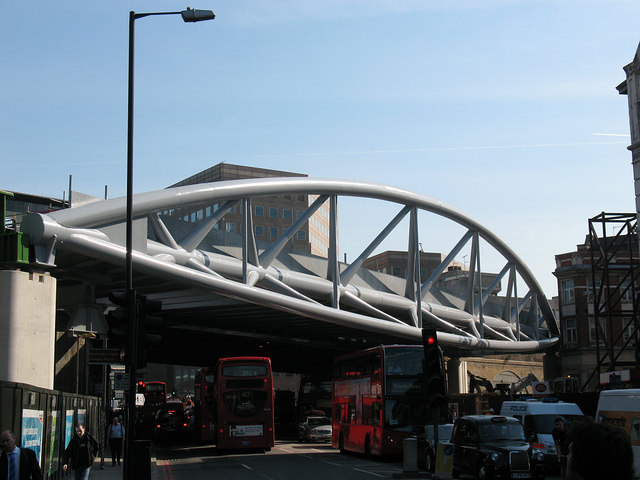
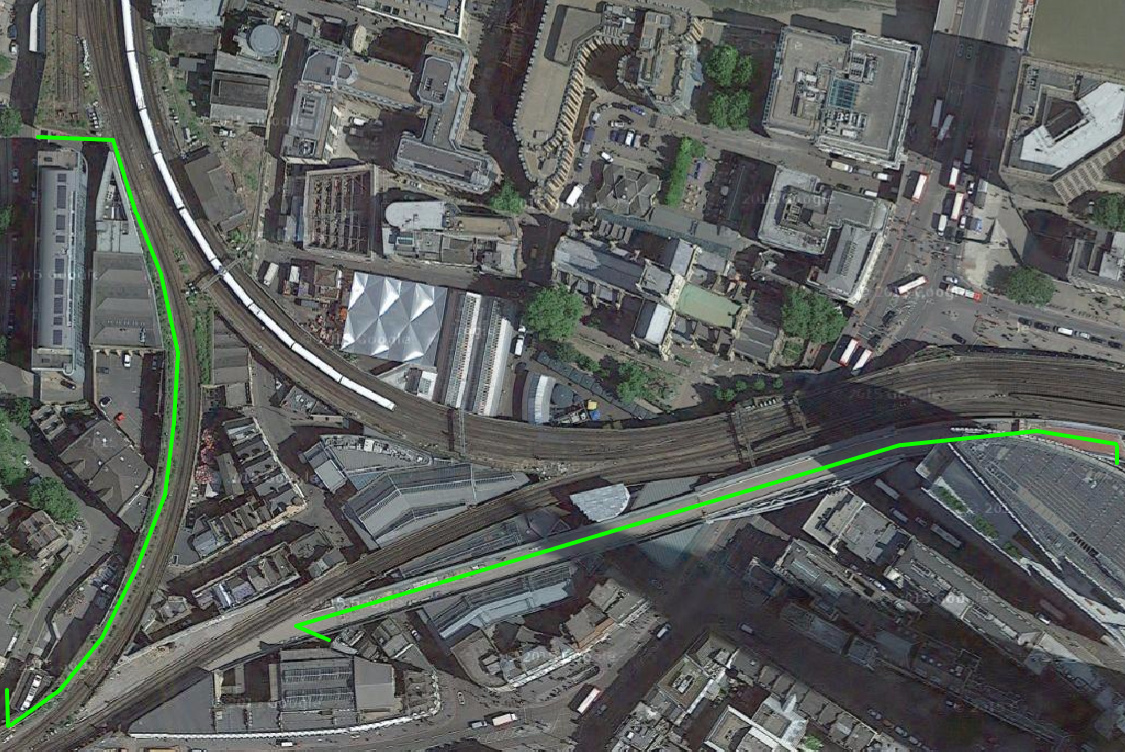
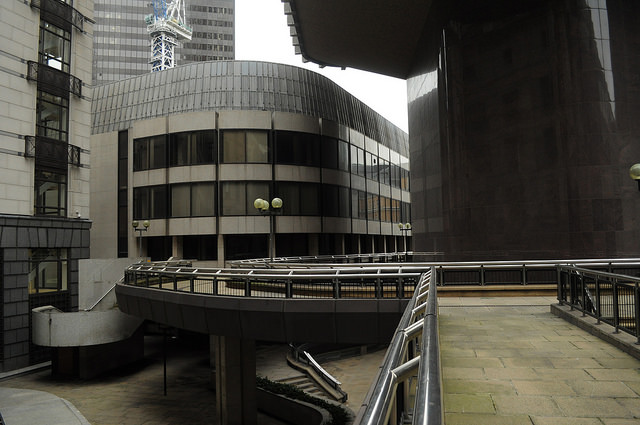
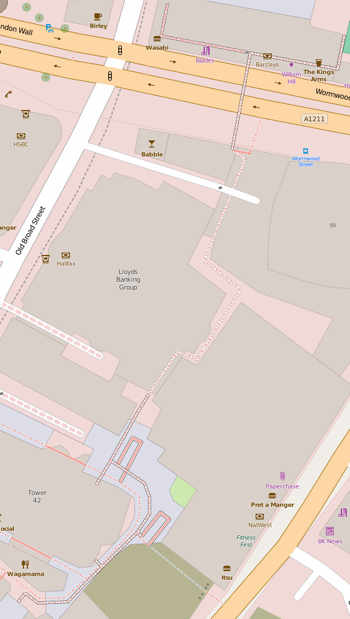 The first is the link that runs behind Tower 42 (the former Natwest Tower). It used to head east to what is now the Gherkin, however the bridge here (across Bishopsgate) was severed when the Pinnacle construction started. The Pinnacle project was then cancelled and the concrete stump is now disappearing again, to be replaced by another skyscraper – but with no bridge link restored. The other link heads north, right through the Lloyds Banking Group building, before coming to another bridge across a busy road. This is still there – for now – but leads to a dead-end, as its steps down were recently removed. So, the urban explorer here has to take the steps down just before the road.
The first is the link that runs behind Tower 42 (the former Natwest Tower). It used to head east to what is now the Gherkin, however the bridge here (across Bishopsgate) was severed when the Pinnacle construction started. The Pinnacle project was then cancelled and the concrete stump is now disappearing again, to be replaced by another skyscraper – but with no bridge link restored. The other link heads north, right through the Lloyds Banking Group building, before coming to another bridge across a busy road. This is still there – for now – but leads to a dead-end, as its steps down were recently removed. So, the urban explorer here has to take the steps down just before the road. 